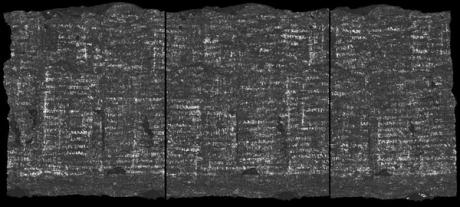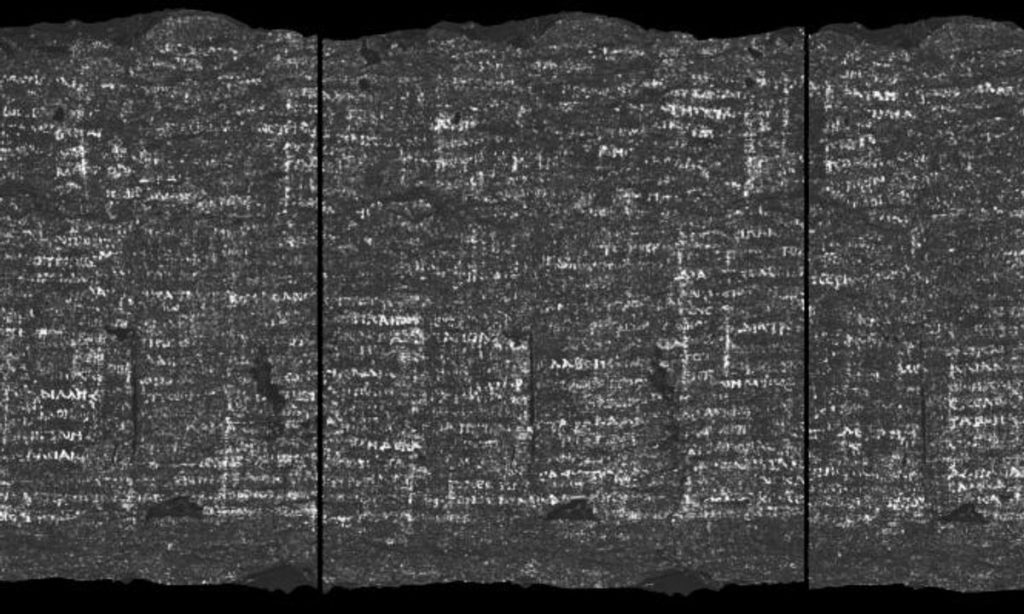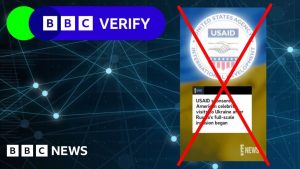
Researchers and papyrologists have used technology to unravel a papyrus scroll without physical intervention, allowing them to generate the first image of the ancient text.
The scroll was buried beneath volcanic ash in the Roman town of Herculaneum following the eruption of Mount Vesuvius in 79AD. Known as PHerc. 172, it was among hundreds discovered in the library of a Roman mansion by an Italian farm worker in 1750, and is now one of three Herculaneum scrolls housed at the Bodleian libraries at the University of Oxford, UK.
A team involved in the Vesuvius Challenge, a competition offering prize money to anyone who can help unlock the scrolls—a process which cannot be completed by hand—has deciphered the text using X-ray imaging and artificial intelligence (AI) algorithms. Words located so far include διατροπή (disgust), φοβ (fear), and βίου (life).
In a statement, the Vesuvius Challenge said: “The scroll offers hints pointing to its likely author being our favourite philosopher in residence: [the Epicurean poet] Philodemus. There’s a bit of early evidence that points us in this direction: the letter-forms present in this book suggest it was written sometime in the first century BCE and are of similar shape to handwriting found in other books attributed to him.”
The process of revealing the carbonised Bodleian scroll’s contents first saw it placed in a synchrotron machine in an Oxford laboratory, where it was subjected to X-ray beams. The scan produced helped create a 3D reconstruction of the scroll which was then analysed using AI. The AI hunts for the tiniest signals indicating the presence of ink which was then painted digitally on to the scan, bringing the letters to light, reports the BBC.
“We’re confident we will be able to read pretty much the whole scroll in its entirety, and it’s the first time we’ve really been able to say that with high confidence,” the project lead Stephen Parsons told the BBC. “We can tell the entire scroll is full of text. Now we can work on making it show up more clearly. We’re going to go from a handful of words to really substantial passages.”
The Vesuvius Challenge website says that “a few hundred scrolls were excavated that were never opened and remain rolled up with their contents sealed away. Our community is building methods to read these scrolls using micro-CT [X-ray imaging technique] and an algorithmic pipeline [through] machine learning and computer vision.” The organisation has received more than $2m in funding from the Musk Foundation established by the controversial businessman and US government employee, Elon Musk.
Last February another team taking part in the Vesuvius Challenge project were able to read around 2,000 Greek letters of a charred scroll found in Herculaneum, which they believed was also written by Philodemus. “This is a complete gamechanger,” Robert Fowler, emeritus professor of Greek at Bristol University and chair of the Herculaneum Society, told The Guardian at the time. “There are hundreds of these scrolls waiting to be read.”








